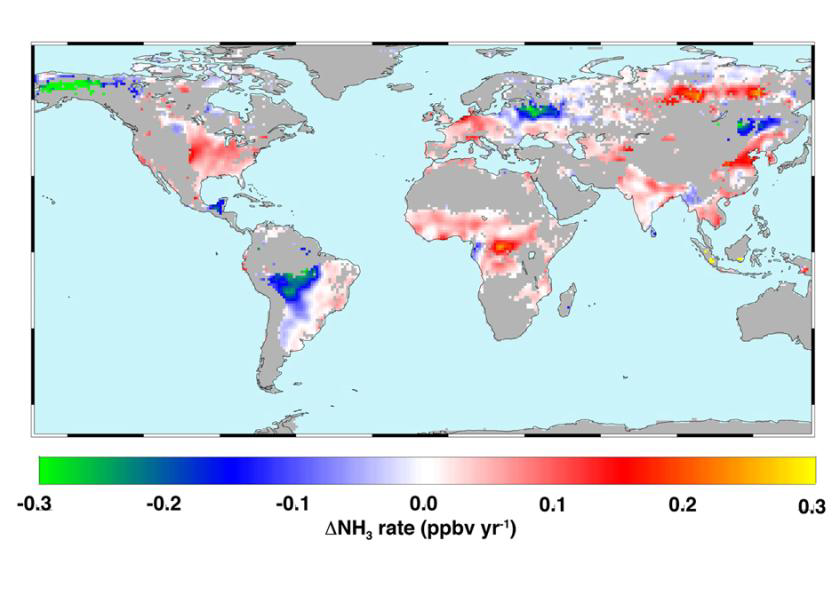In the article, published on the International journal Atmosphere, it is stated that ammonia is a common factor linking air in bat caves and air pollution in the proximity of agricultural fields treated with livestock farming sewage and slaughterhouses, where important clusters of COVID-19 have recently been reported all over the world. Such a commonality has a further connection with the known behavior of some viruses of the coronavirus family, such as the murine hepatitis virus, whose spike glycoprotein (S) can be triggered to a membrane-binding conformation at pH 8.0. Within the airborne route of virus transmission, with particular relevance for crowded and enclosed environments, these observations have prompted a hypothesis that may represent a contributing cause to interpret the geographical variability of the virus diffusion and the surging rise of COVID-19 cases in slaughterhouses all over the world. The hypothesis is that, in these environments, the SARS-CoV-2 S protein may find on a fraction of the airborne particles an alkaline pH, favorable to trigger the conformational changes, needed to induce the fusion of the viral envelope with the plasma membrane of the target cells.
The research was carried out by a team of experts including Ettore Guerriero, a researcher at the Institute of Atmospheric Pollution Research, an expert in monitoring work environments and industrial emissions.
In recent months, the CNR-IIA is developing various studies on the spread of the virus in the air and on the interaction with atmospheric pollution in order to put research at the service of the community.



